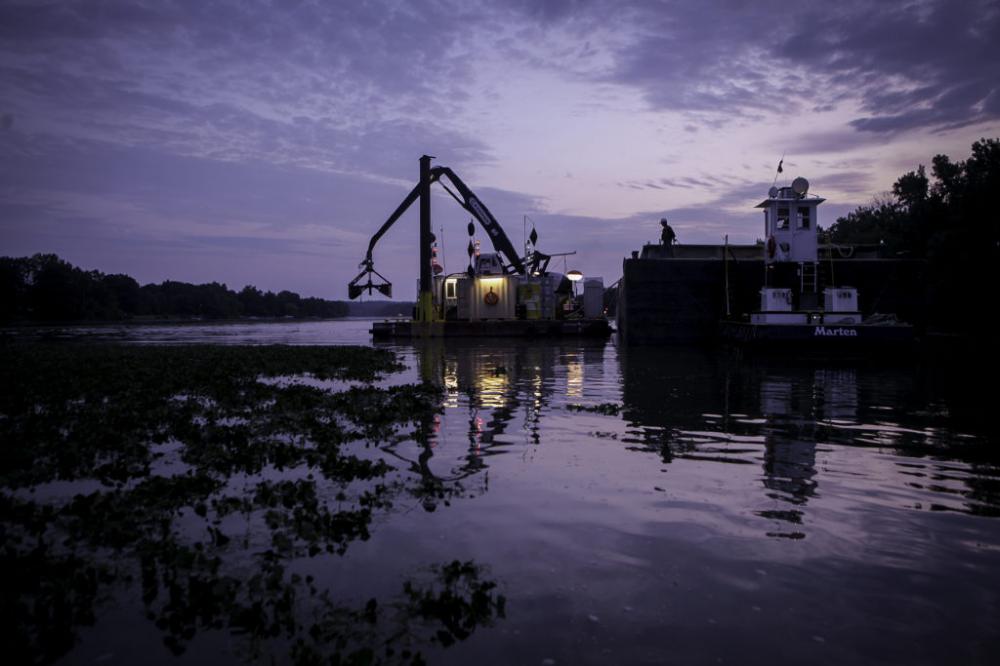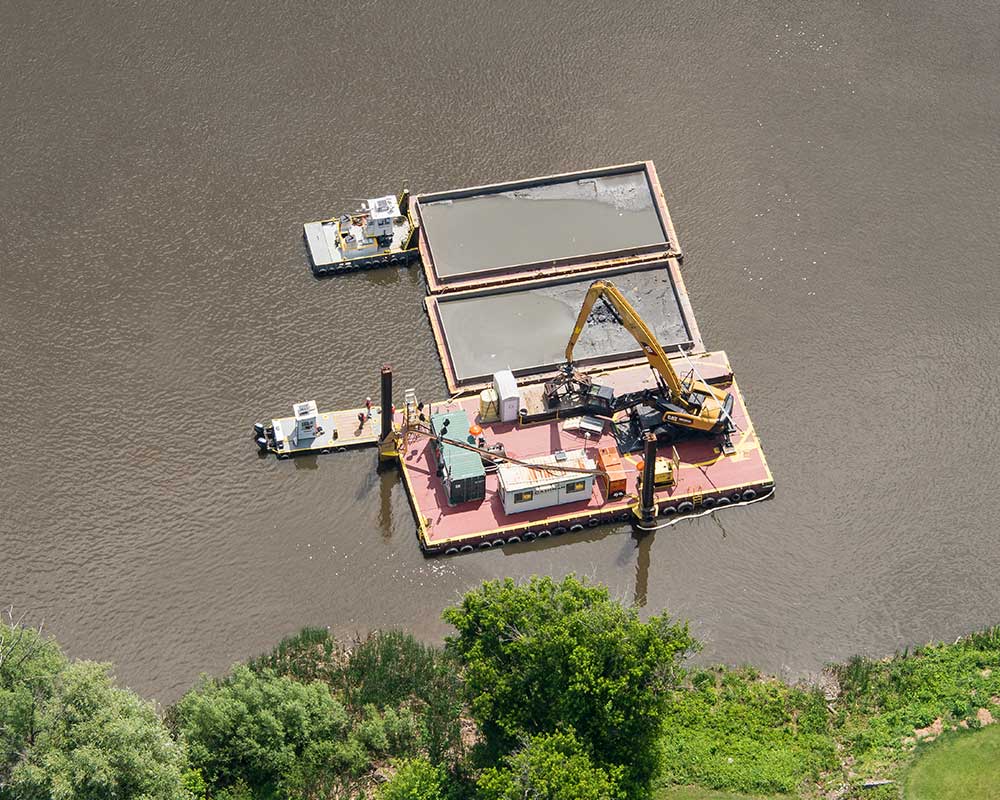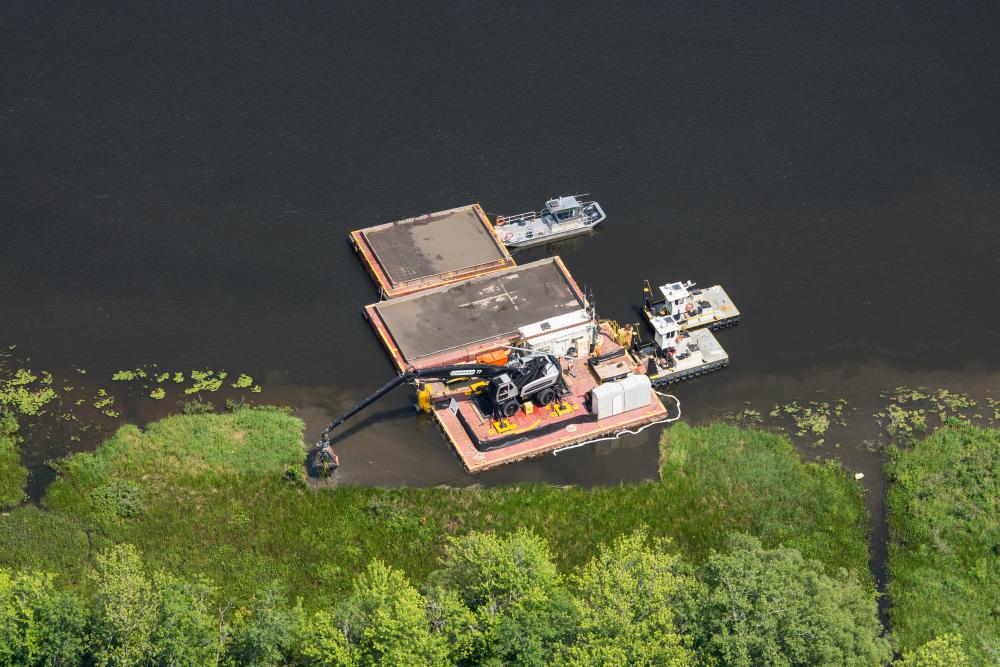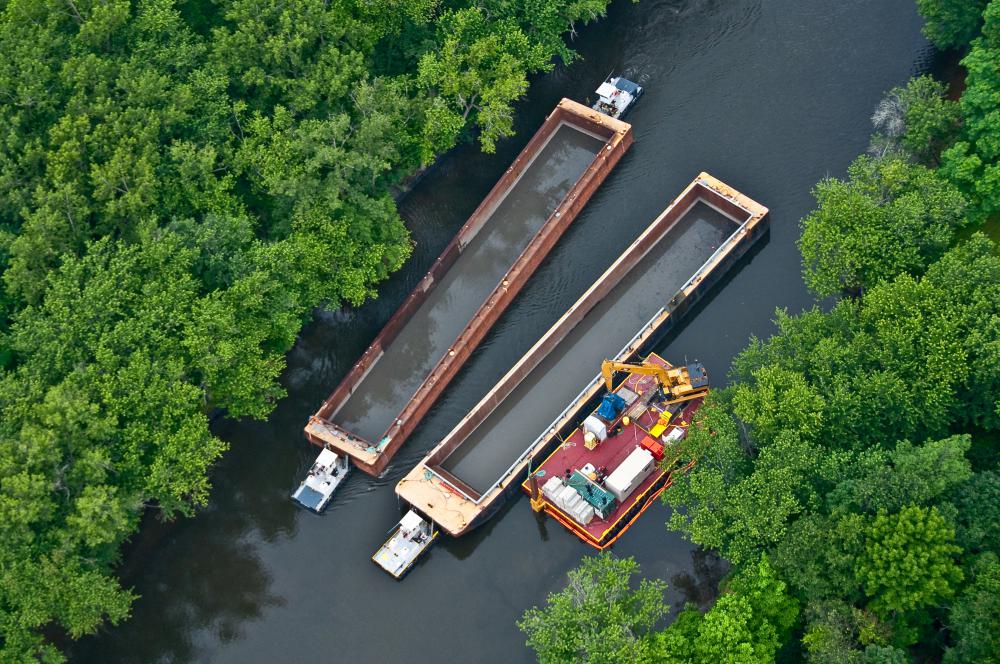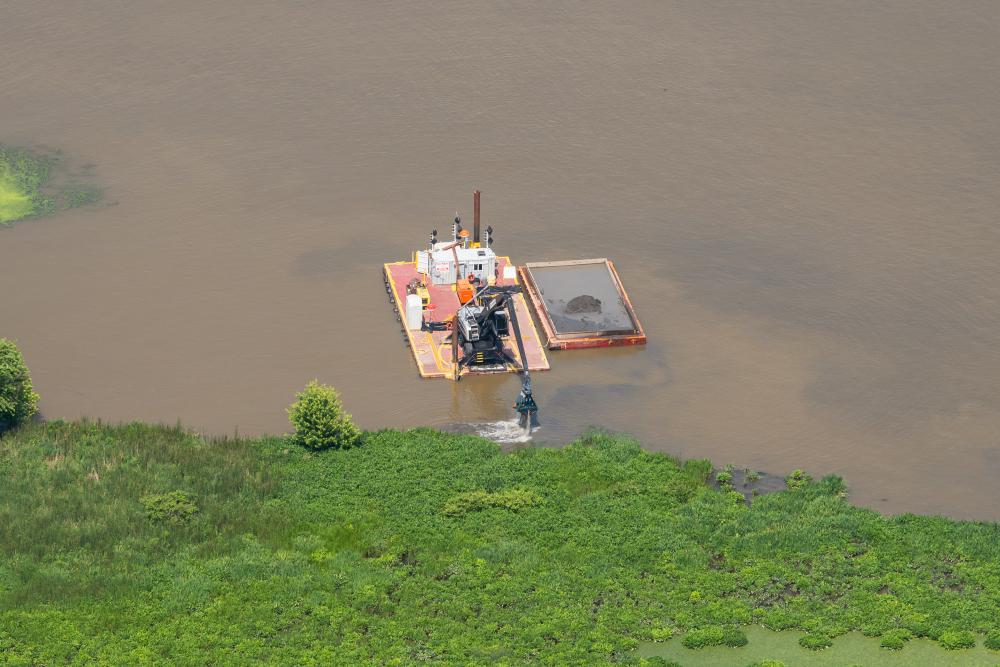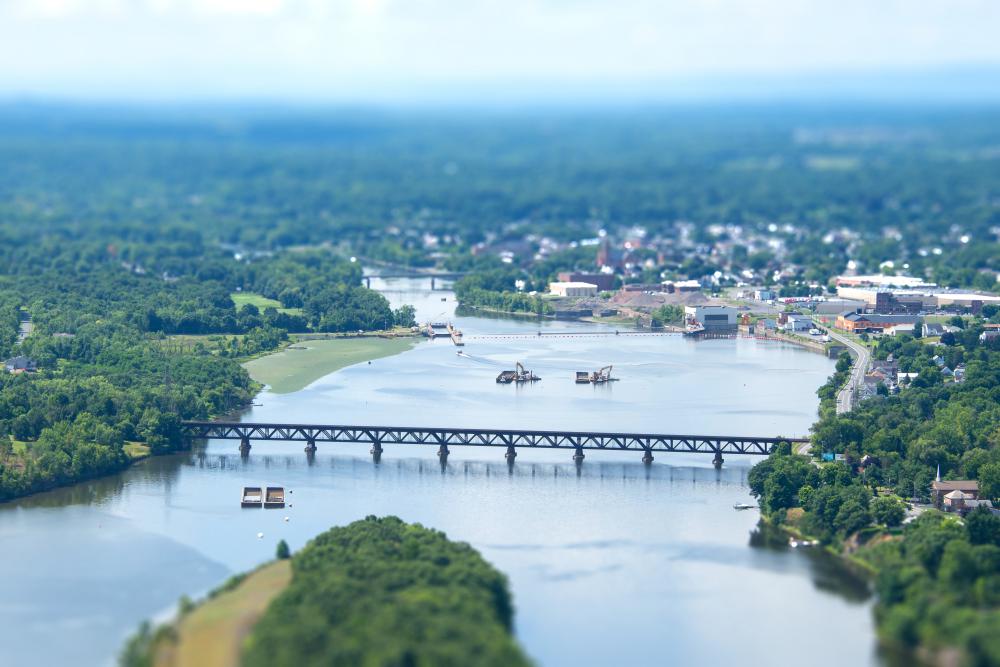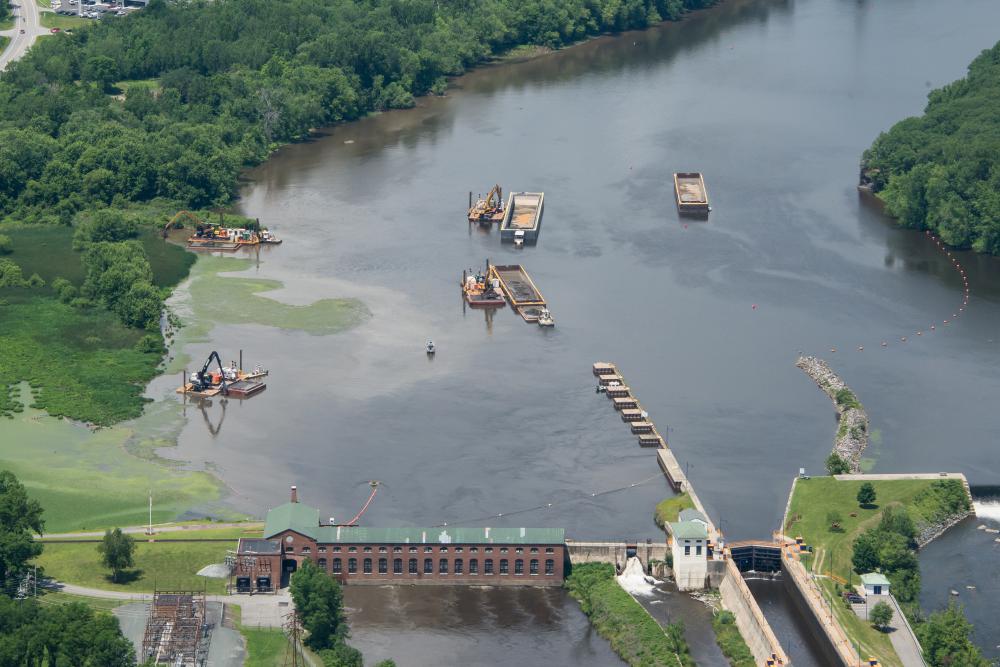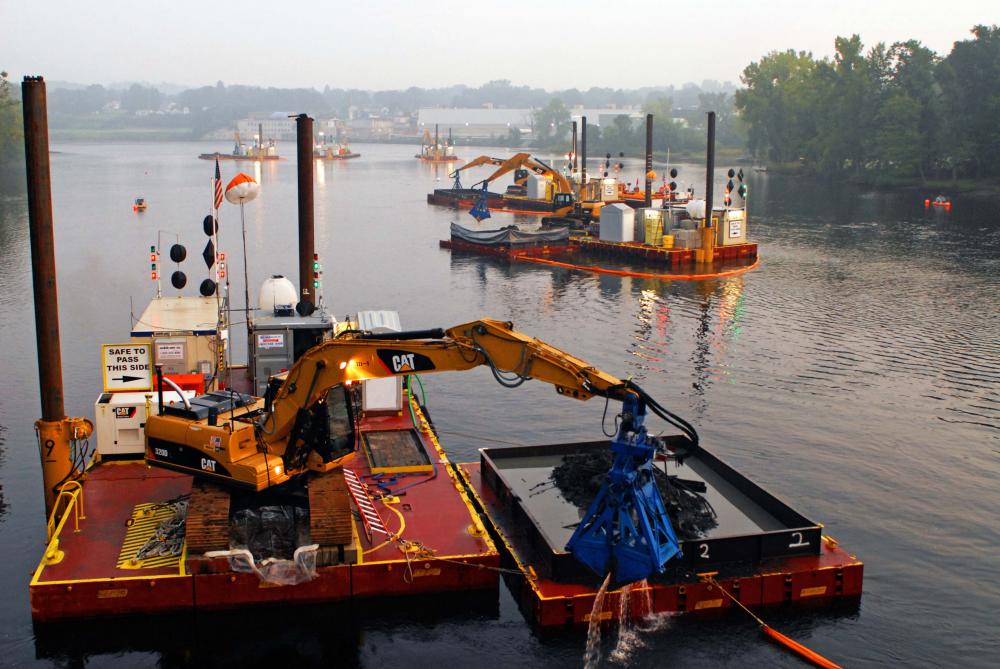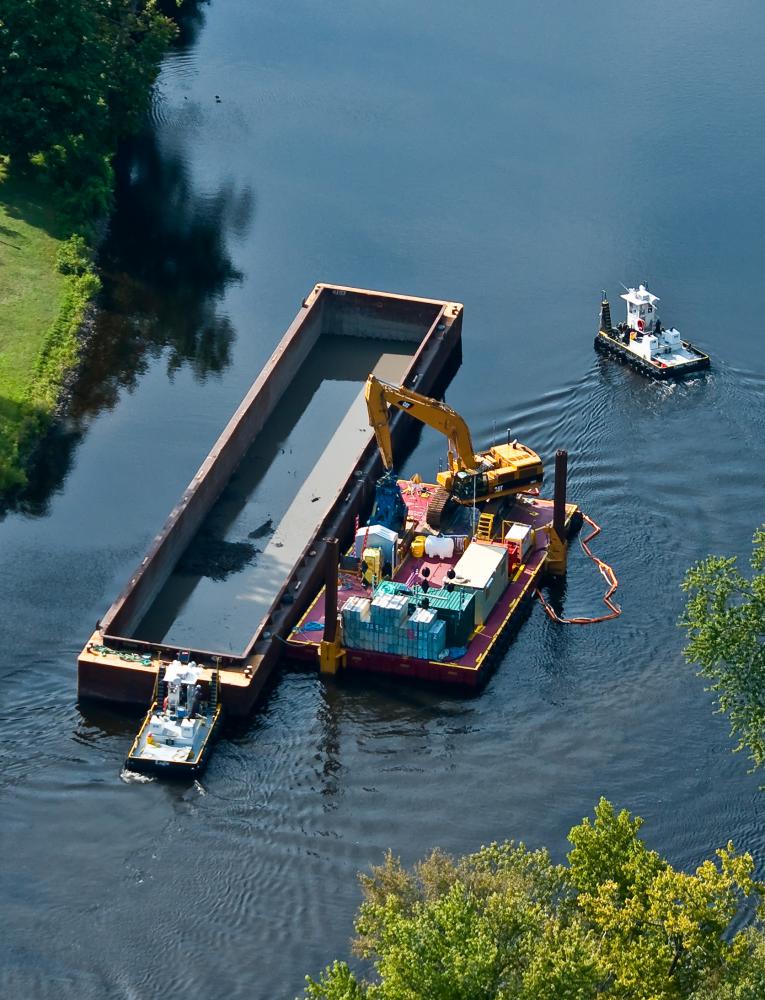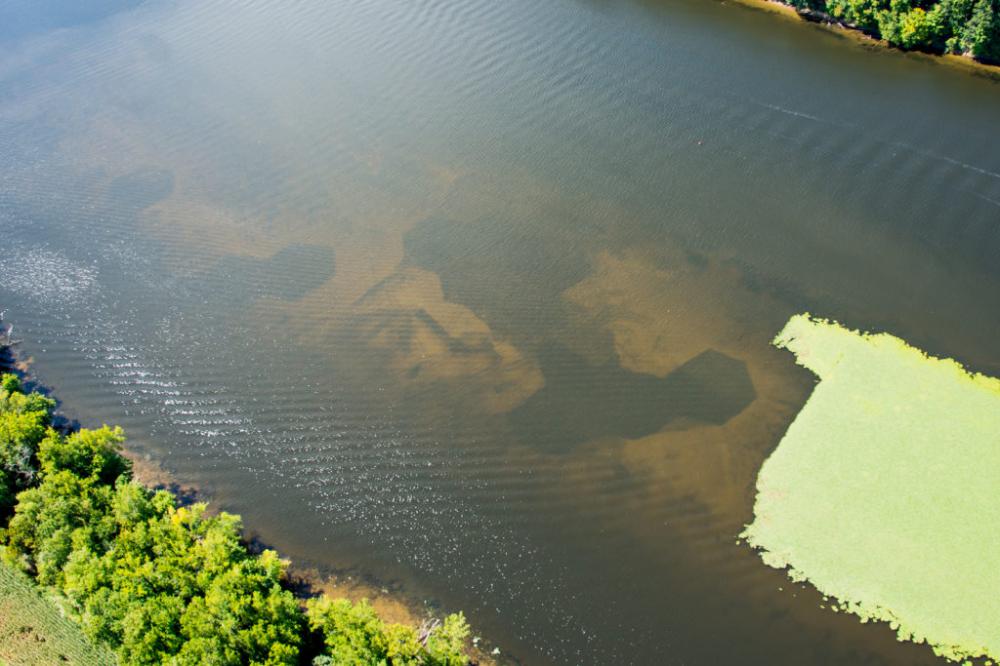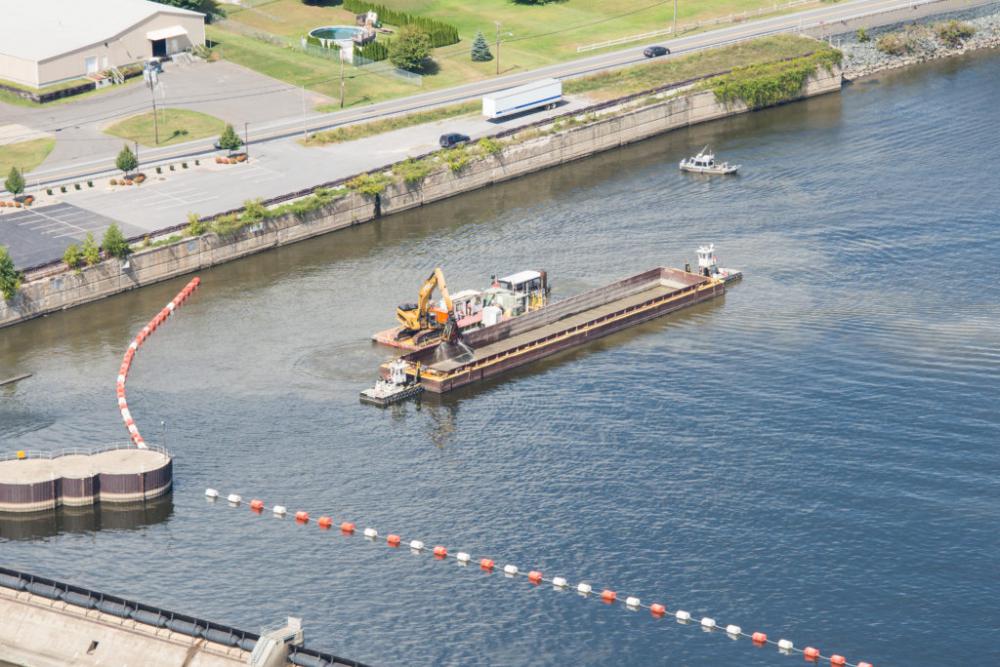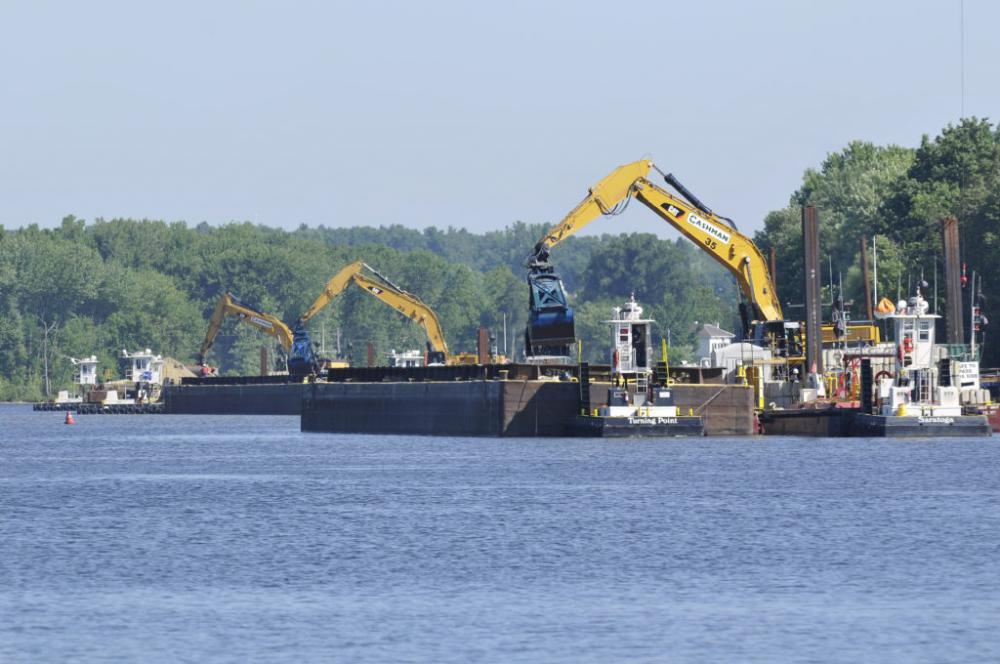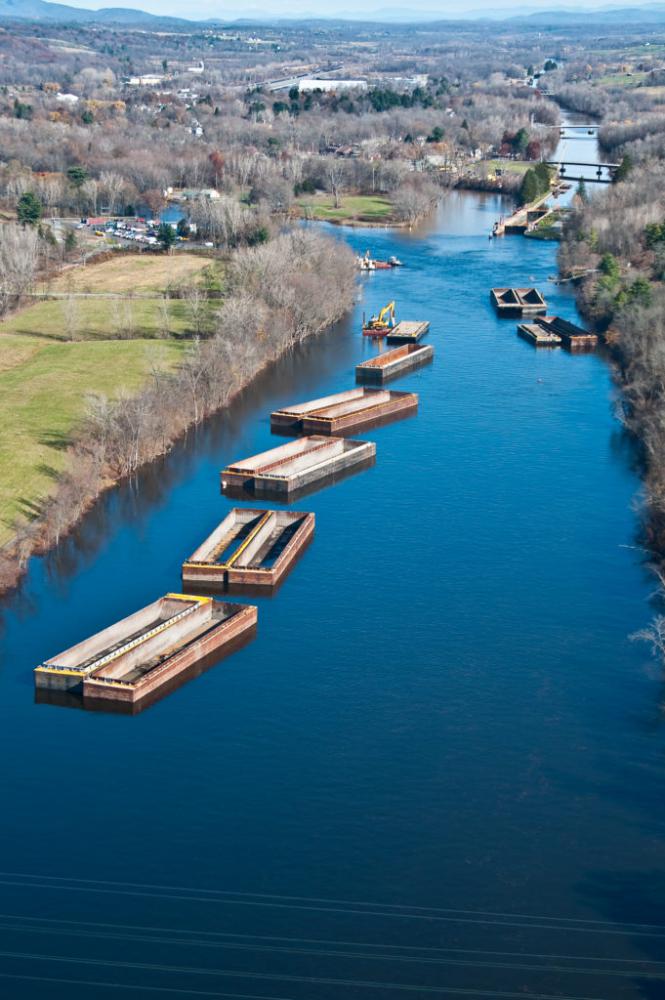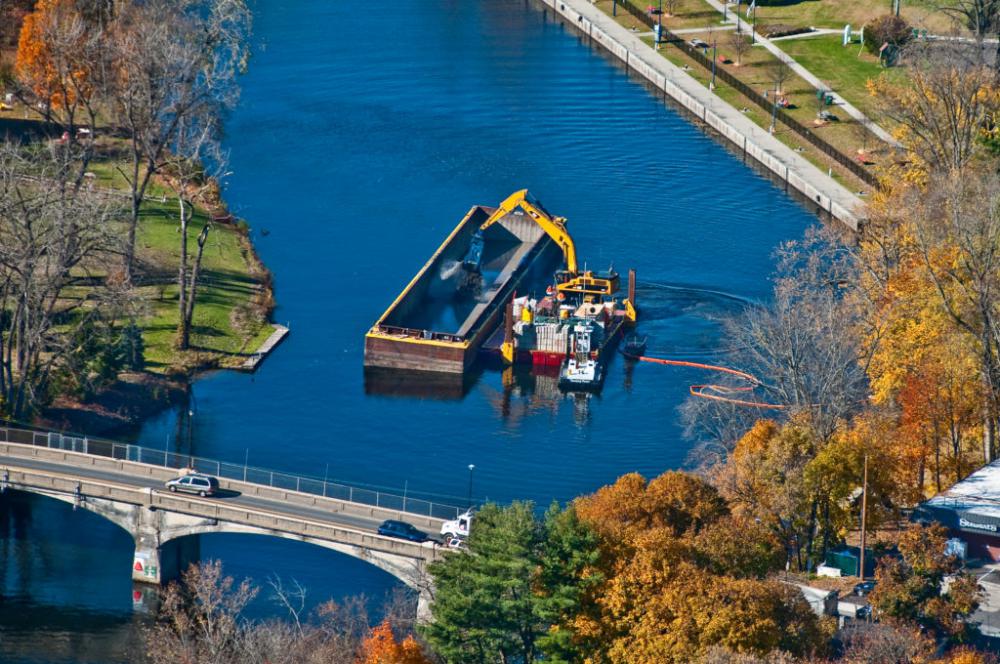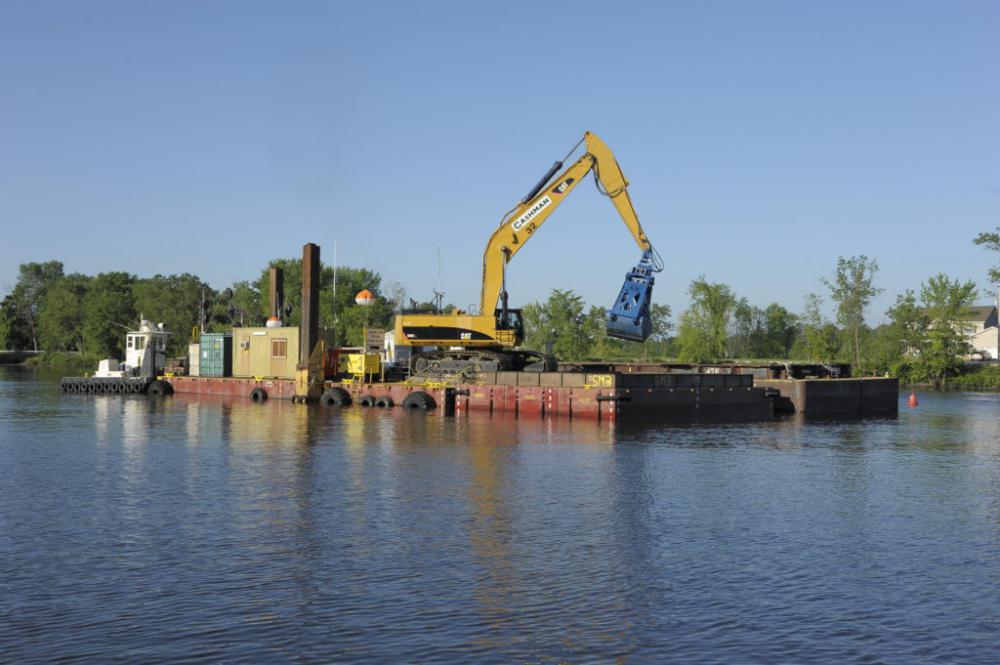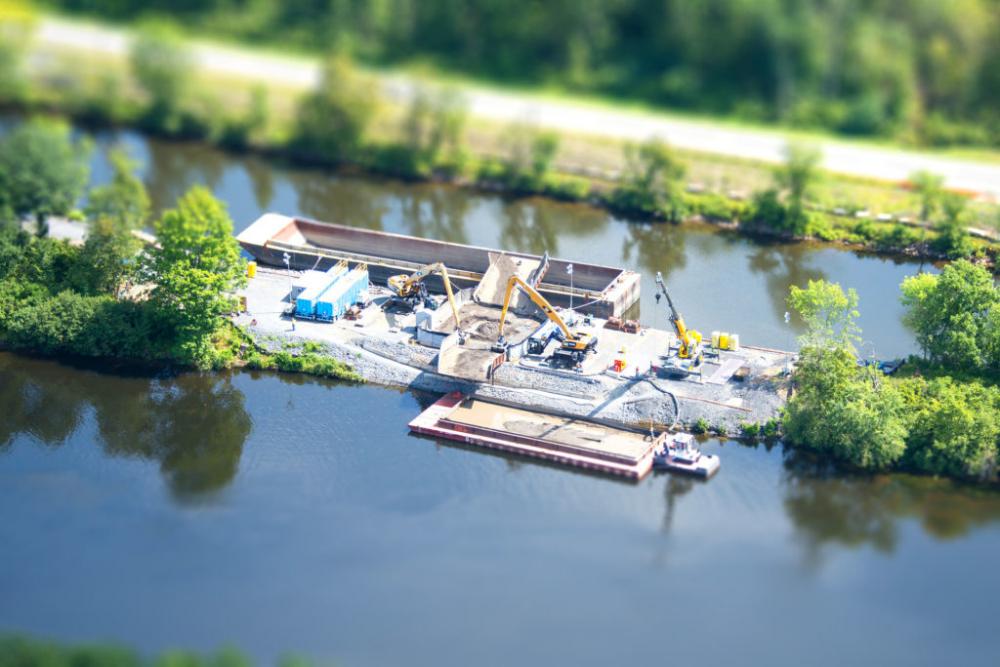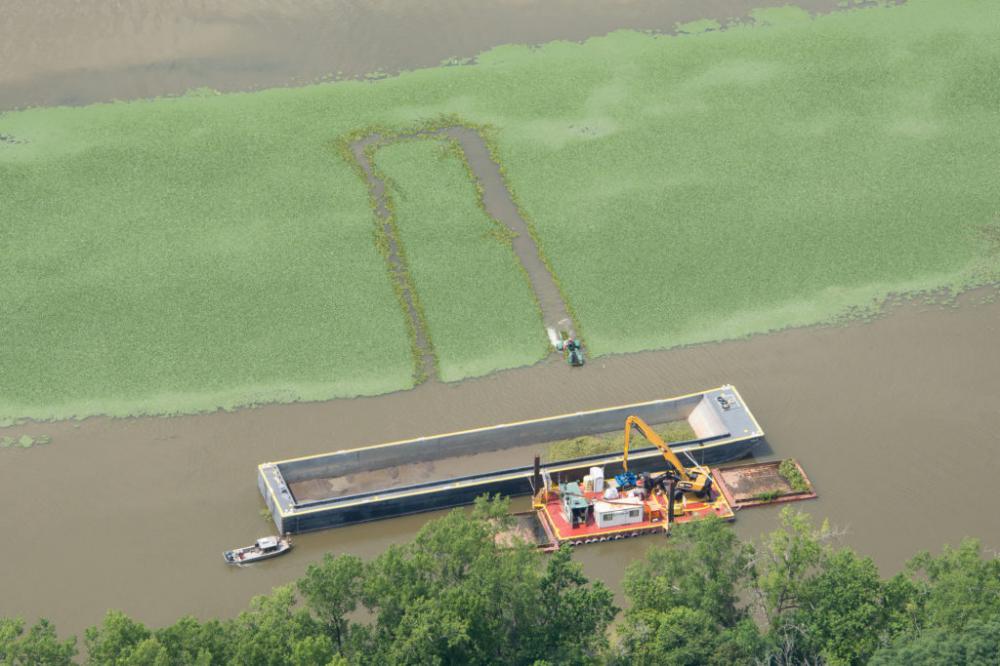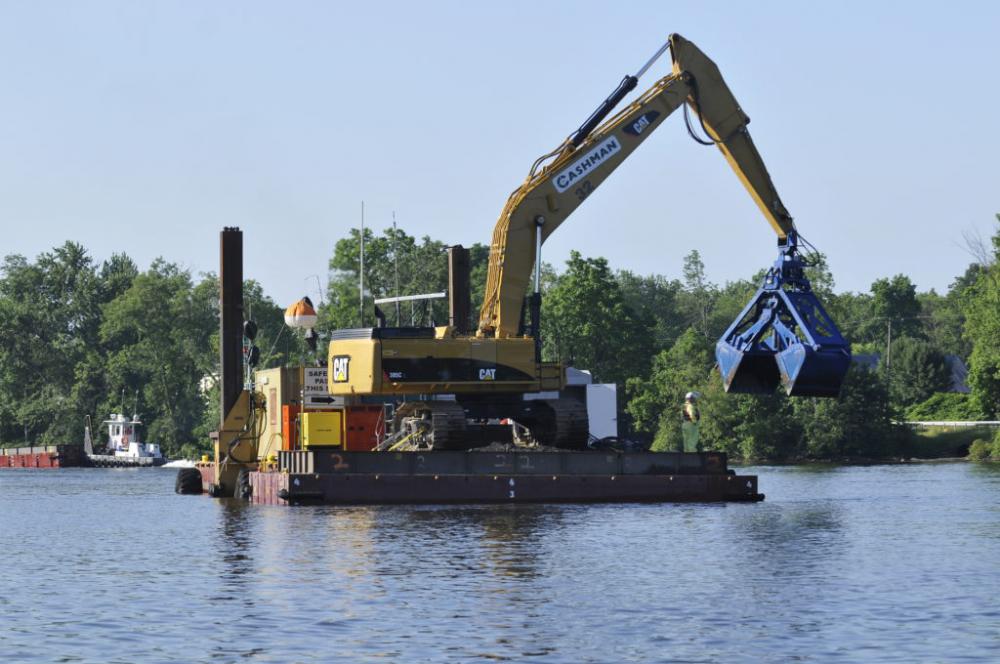CASHMAN DREDGING was part of the dredging contractors that took part in one of the largest polychlorinated biphenyl (PCB) sediment remediation projects in U.S. history. When the final season was completed for General Electric in 2015, more than 2.75 million yd3 of sediment from a 40-mile stretch of the upper Hudson River between Fort Edward and Troy, NY have been removed, and 100 percent of the PCBs targeted by the EPA have been addressed. It took "a world-class team of engineers and dredging experts to design and perform the work," which the EPA calls "a historic achievement."
PROJECT HIGHLIGHTS
Phase 1: In July 2008, GE awarded CASHMAN DREDGING & MARINE CONTRACTING COMPANY, LLC a contract to perform the first year of dredging on what has become the largest environmental remediation project in U.S. history. CASHMAN crews worked 24 hours a day, six days a week, for six months, to complete the first phase of work. Ultimately, 288,000 yd3 of sediment were removed, surpassing EPA's 2009 target.
Phase 2: In June 2011, CASHMAN began the multi-seasoned second phase of work dredging, transporting sediments by barge to the processing facility, and shipping dewatered sediments by rail to disposal facilities.
- From May through November 2012, CASHMAN removed +663,000 yd3 of sediment during the season, far surpassing EPA's target of 350,000 yd3. CASHMAN also constructed a second unloading wharf at the processing facility during the winter 2012 season to accommodate the large volume of dredged materials.
- From April through November 2013, +628,000 yd3 of sediment were removed.
- The 2014 season commenced in early May; good weather and low river flows allowed CASHMAN to remove +583,000 yd3, again exceeding goals. During this second phase, dredging techniques and technologies were refined, which enabled industry-leading dredging precision while also increasing dredge productivity across a wide range of varied site conditions, from extremely shallow water to work in front of dams.
- The final season of dredging was performed from May to October 2015. Approximately 250,000 yd3 of PCB-impacted sediment was targeted for removal in 2015. Several logistically challenging areas were dredged in 2015, including those near dams and shallow areas around islands. As in 2014, dredging also continued in a two-mile section of river near Fort Miller that is inaccessible by boat. Backfilling of previously dredged areas with clean material extended into November 2015, and processing facility operations continued until all dredged sediment was transported offsite (December 2015).
- EPA called the project "a historic achievement" and determined the project removed 100 percent of the PCBs targeted for removal — more than 2.75 million yd3 of sediment from a 40-mile stretch of river.
- The value of this project is considered confidential per client request.
Details
General Electric
Confidential
March 2009 - December 2015
• ENVIRONMENTAL DREDGING

